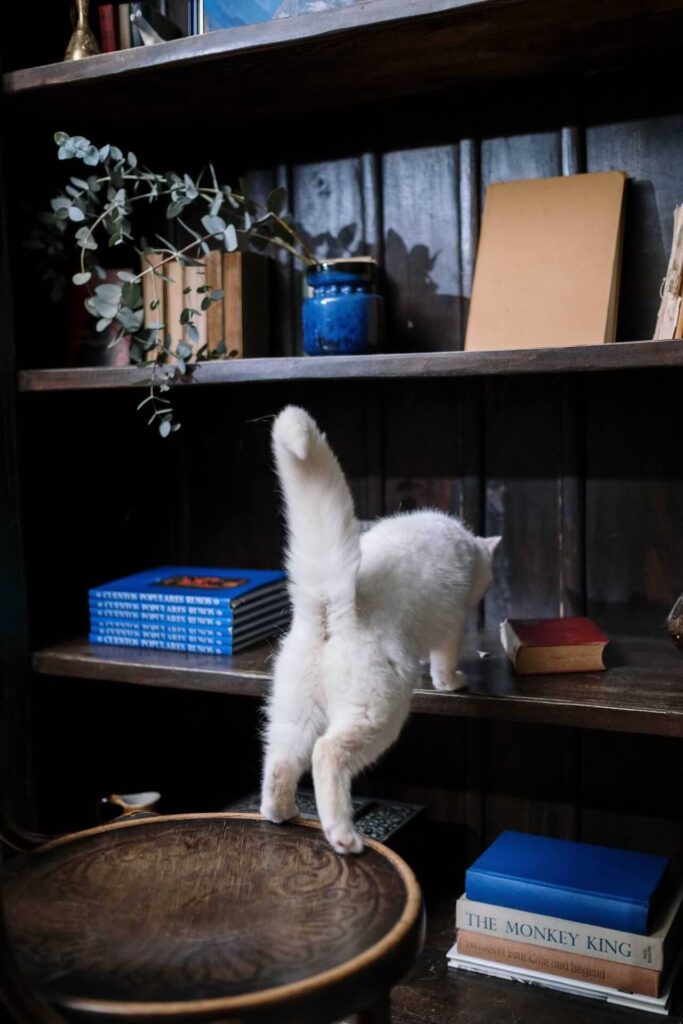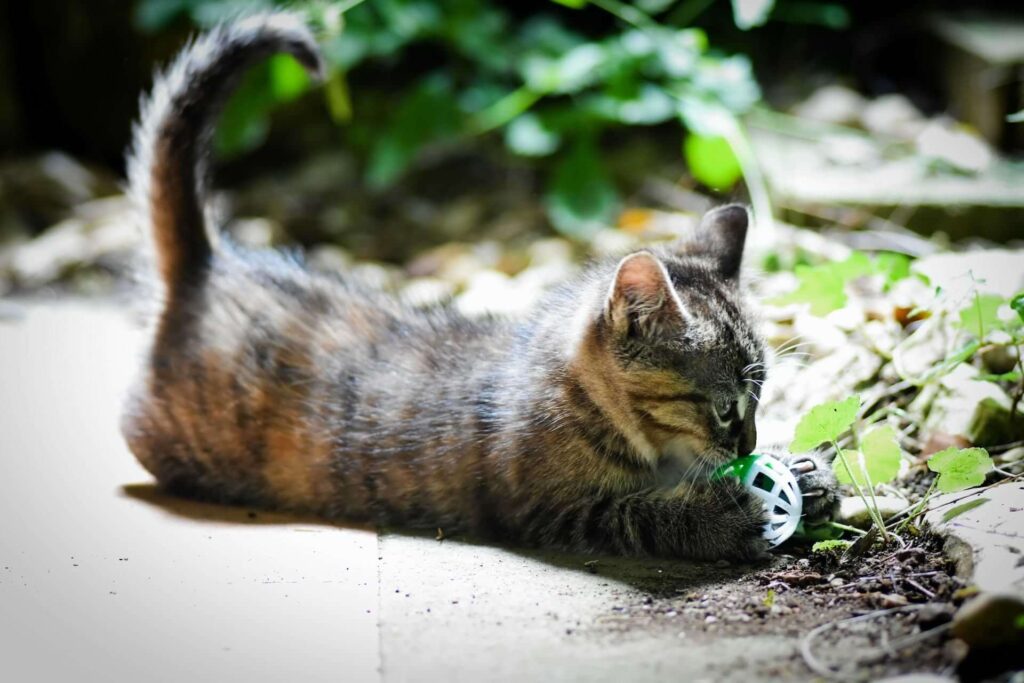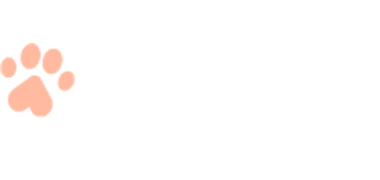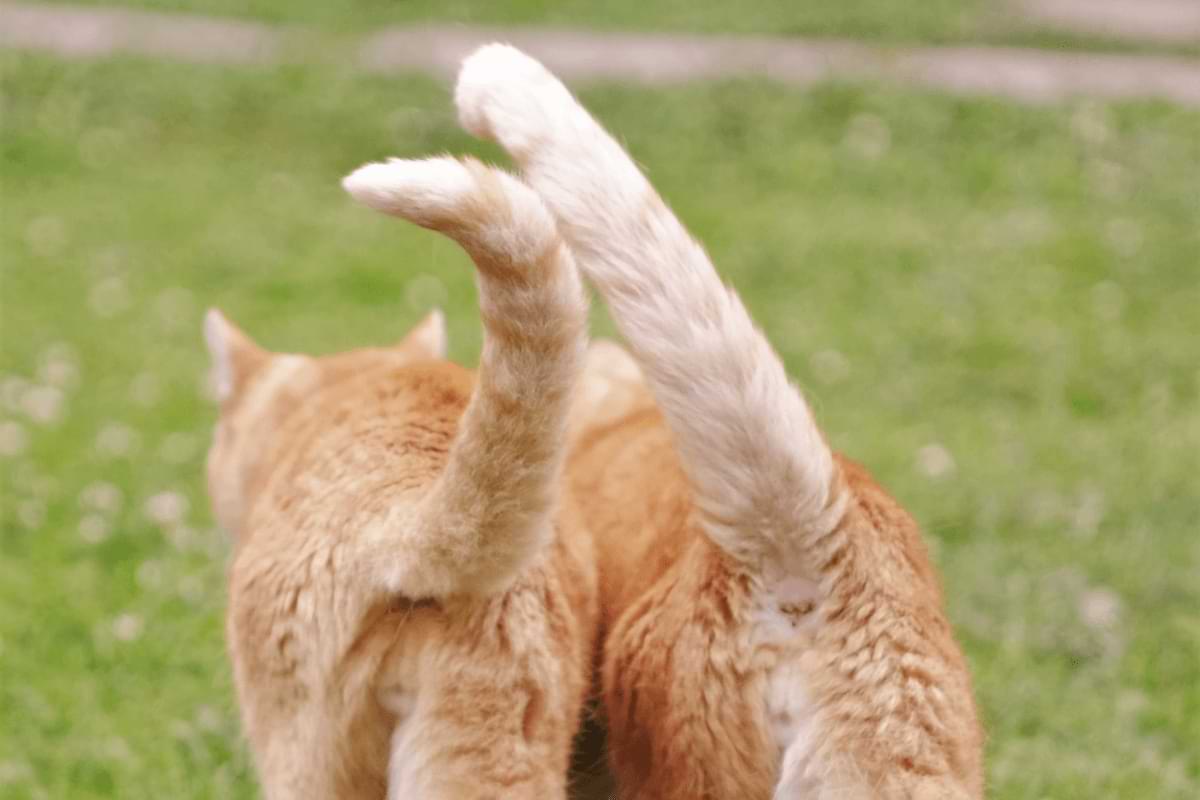Communication is one of the factors for creating a better relationship. A better understanding of your feline helps you to become a better fur parent. Just like how humans interact through words, cats communicate through their body language. Cats use their ears and tails. A cat language is their tail movement and position, which is more complicated to understand what they mean.
Discover the meaning behind the cat tail wagging in this article. Learn how to check what your cat feels. If your feline is in the mood to play or your cat needs something.
Types Of Cat Tail Wagging
You may have wondered about reasons why your cat stands at times. There is more to know about your friend based on their tails. Cat tail wagging expresses their mood. Check and observe how your cat feels at the moment.
The Swish Tail Movement
The swish movement of a cat’s tail signals that they want to be alone or have playtime. We should not be quick to judge if they are looking for attention. A fast movement in their tail expresses that your cat is feeling upset. In comparison, their slow movement indicates that they are mildly irritated.
A slow tail swish may also be because of a toy. Cats are paying close attention to the toy or a view from the outside captivates a feline. Pay attention if they are in a start position to jump. If you notice that they are hunching close to the ground and wiggling their body back and forth, a pounce is on the way. A good practice for their predatory behavior includes stalking. Let them enjoy their free time to improve their skill. Discipline them if they may harm others, say if they are about to jump on a person.
The Twitch On Their Tail End
A cat twitching the end of its tail warns about their territory or personal space. A combination of twitch and thump means your cat wants to be alone or upset. They may have found something, or someone invades their space. A more personal definition is when your feline sits with its back to you, twitching the tail back and forth. Give them a treat to lessen their irritation or frustration.

Most of the unneutered male felines twitch their tails back and forth while holding them in the air. The said behavior signals that they have placed a mark on their territory. You can confirm it through the wet mark on the furniture or space.
Cat tail wagging which includes her ears and eyes shows that the feline feels unsettled or just pays a sharp focus on an object. A better assessment of the situation first to have the best understanding of what they feel. Cats can pacify themselves on their own. It is better to let them be at the moment.
The Tail Quivers
Going home from work, you may see your fur friend welcoming you with their tail behind the back. Back-and-forth gentle wags tell that your cat is in a good mood. Quiver by definition is a quick, tiny cat tail-wagging move. For cats, this is an act of excitement from seeing you or their cat friends. Your fur friend might have dearly missed you. A cat approaches its owner with its tail at a vertical position and with just the tip of it that wiggles so fast. If that wasn’t enough to tell you how happy they are to see you. A cat tail quiver includes face rubs, purrs, and happy tunes from a cat’s vocal that indicates they are ready for interaction. Let them know you feel the same way by petting them or making them tickle.
The Sleepy Flick Of Their Tail
Would you believe that cats sometimes ignore you on purpose? A fur friend sometimes assesses whether you are worth their time. But of course, food is an exception. There are times when cats are contented with the comfort, they are currently in. A sleepy flick on their tail shows they would like to continue their sleep, even if they hear us calling their names. Being please with our presence without an acknowledgement from them
FUN FACTS
How Do Cats Move Their Tails?
A cat’s tail is part of its spine. It helps them to move around where they want to go. An injured cat tail will not disable your fur friend. A tail composes many ligaments, nerves, and muscles functioning together. It is not just a vertebrae.

Can Cats Control Their Tail?
Tails involuntarily moves if a cat is asleep or taking a rest. Just like how we blink our eyes unconsciously. Yet can cats control their tails. The answer is yes. Cats use their tails to express their emotions and mood. As mentioned above, observing the situation and their behavior will tell you if they are expressing themselves to you. Cats have control over their tail’s movements and posture. For their balance, a cat tail is an essential factor.
Why Do Cats Curl Their Tails On Their Bodies?
A cat that curls their tail on their bodies indicates stress. It is their way of comforting themselves from their feeling of being scared, in pain, or sick. You might observe a defensive behavior from your cat. A more stress-free environment is advisable. Their tail is the most expressive part of a cat’s language. It is better to visit a vet if it continues to have that behavior for a couple of days more. In this way, you can be aware of the correct emotional state of your fur friend and be sure that they are not in serious illness or pain.
Conclusion
You may usually see that your cat is wagging its tail several times a day. Cat tail wagging helps a fur parent to understand their feline better. As discussed in this article, you may identify their mood depending on the position or movement of their tails. It is their way of expressing themselves to you. In their cat language, they will let you know if they are in a good mood or in bad weather. The behavior of their tail will let you know if they are up for some interaction or prefer to have their personal space and time.





